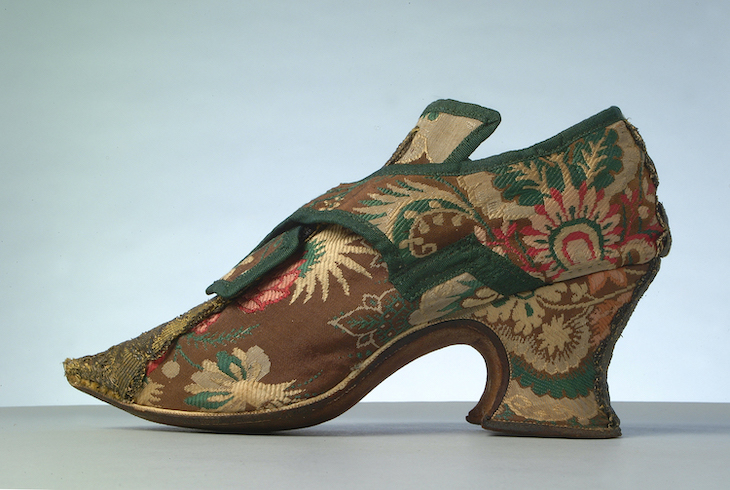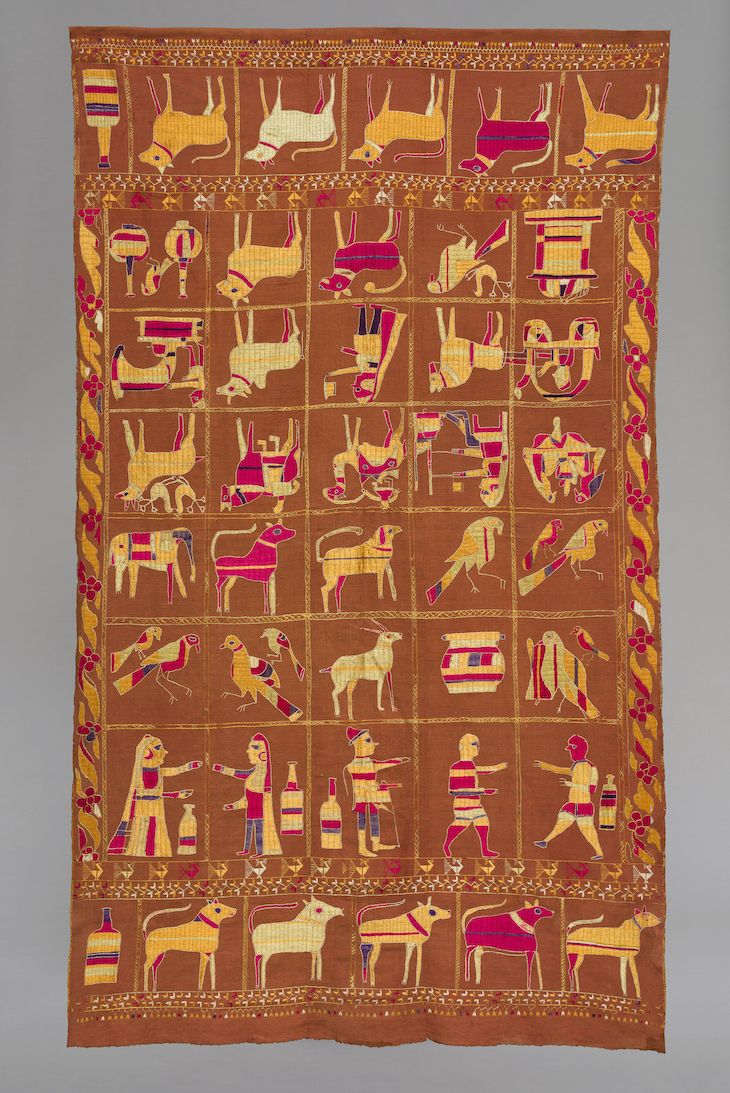Seven women who collected textiles during the 20th century are the focus of this exhibition, which considers how the collections they formed – ranging from Balkan costumes to South Asian saris – helped to assert the status of these materials as works of art. Find out more from Two Temple Place’s website.
Preview the exhibition below | View Apollo’s Art Diary here

Giubba (19th century), Albania. Photo: Calderdale Museums Collection, Halifax
The artist and writer Edith Durham (1863–1944) travelled widely across the Balkans in early 20th century, becoming renowned for her anthropological reports on life in Serbia, Albania and Kosovo. In 1935, her collection of Balkan costume and jewellery – including this giubba, a traditional robe worn by Albanian women – was donated in 1935 to the Bankfield Museum in Halifax, where it remains to this day.

Brocade shoe without clog (1735–45), unknown maker. Photo: John Chase Photography/The Olive Matthews Collection, Chertsey Museum
Drawn to historic fashion from a young age, Olive Matthews built up a significant collection of more than 4,000 objects over the course of her lifetime – being careful always to stick to a budget of no more than £5 per item. She focused particularly on delicate needlework and embroidery – as seen on this shoe of brocaded silk from the 18th century.

Curtain with jungle repeat pattern (n.d.), Enid Marx. Photo: Harminder Judge/Compton Verney
Along with her friend Margaret Lambert, Enid Marx amassed a major collection of English folk art after 1932, although by this time she was already a renowned textile artist in her own right, having studied alongside Eric Ravilious and Edward Bawden at the Royal College of Art in the 1920s. In the exhibition, examples of her own work – such as this repeating pattern, reminiscent of animal hide – are on show alongside objects from her collection.

Phulkari (early 20th century), unknown maker. Photo: Paul Tucker; © Bradford Museums and Galleries
From 1985–98, Nima Poovaya-Smith was senior keeper of international arts at Bradford Art Galleries and Museums, during which time she established the transcultural gallery at Cartwright Hall. She built up a collection at the gallery that reflected Bradford’s history of textile manufacture and explored the influence on it of fabrics from across the world – in particular southern Asia. This colourful cloth is an example of phulkari (‘floral work’ in Punjabi), so-called because of the embroidered patterns that extend over every inch of the fabric.











![Masterpiece [Re]discovery 2022. Photo: Ben Fisher Photography, courtesy of Masterpiece London](http://www.apollo-magazine.com/wp-content/uploads/2022/07/MPL2022_4263.jpg)
How to give back looted objects